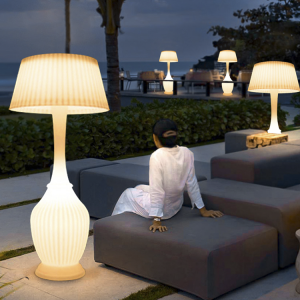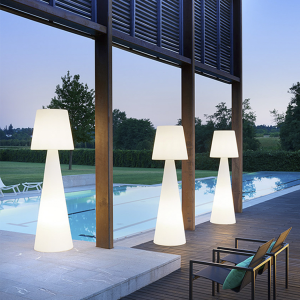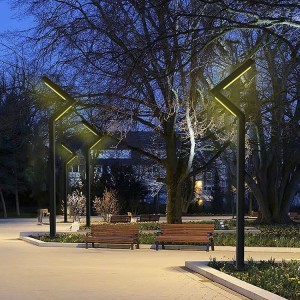I. Introduction
Solar street lights have become an increasingly popular outdoor lighting option around the world. Powered by renewable energy from the sun, these lights offer an environmentally friendly and cost-effective solution for lighting streets, pathways and public spaces. In this article, we'll take a closer look at the lifespan of rechargeable batteries in solar lights, as well as some of the factors that can affect their longevity.
II. Meaning of Rechargeable Battery
Rechargeable batteries are an important part of solar street lights because they store the energy produced by the sun during the day to power the street lights at night. These batteries are typically made of nickel cadmium (NiCd), nickel metal hydride (NiMH), or lithium ion (Li ion) and are designed to meet the unique needs of solar lighting systems.
III. Factors Affecting Battery Life
A. Battery Type
Nickel-cadmium (NiCd) batteries used to be the main choice, with a lifespan of about 2-3 years. However, due to their high toxicity and low energy density, they are now less common. On the other hand, NiMH batteries have a much longer lifespan, usually 3-5 years. These batteries are very environmentally friendly and have a higher energy density than NiCd batteries. The newest and most advanced option is lithium-ion batteries. These batteries have a lifespan of about 5-7 years and offer excellent performance, energy density and longevity.
B. Installation Environment
Extreme weather conditions, such as extreme heat or cold, can affect battery performance and life. High temperatures accelerate the degradation of battery materials, while low temperatures reduce the capacity of the battery. Therefore, when installing solar street lights, it is important to consider the local climate and choose batteries that can withstand specific conditions.
C. Frequency and depth of discharge cycle
Depending on the time of year and available solar energy, solar lights tend to have different discharge and charge patterns. Deep discharges occur when the battery is almost completely depleted before recharging, which can shorten the life of the battery. Similarly, frequent discharge and charge cycles can lead to battery wear and tear. To maximize the life of rechargeable batteries, it is recommended that deep discharges be avoided and that a proper maintenance schedule be put in place.
Resources | Quick Screen Your Solar Street Lights Needs
IV. Maintaining the Battery
Regular maintenance includes cleaning the solar panels to remove dirt and debris that can block sunlight and reduce charging efficiency. Additionally, checking light connections and wiring, as well as ensuring proper ventilation, can prevent potential problems and extend the life of the battery. It's also important to follow the manufacturer's guidelines and recommendations for maintaining solar lights and batteries.
V. Summary
For urban planners, typically the rechargeable batteries in solar street lights can withstand 300-500 charges and discharges. Through maintenance, solar street lights can be used in extending the life of providing energy efficient and sustainable outdoor lighting. If you want to buy or customize outdoor solar street light, welcome to contact Huajun Lighting Factory. We are always ready to provide you with street light quotes and product details.
Related Reading
Illuminate your beautiful outdoor space with our premium quality garden lights!
Post time: Nov-15-2023





